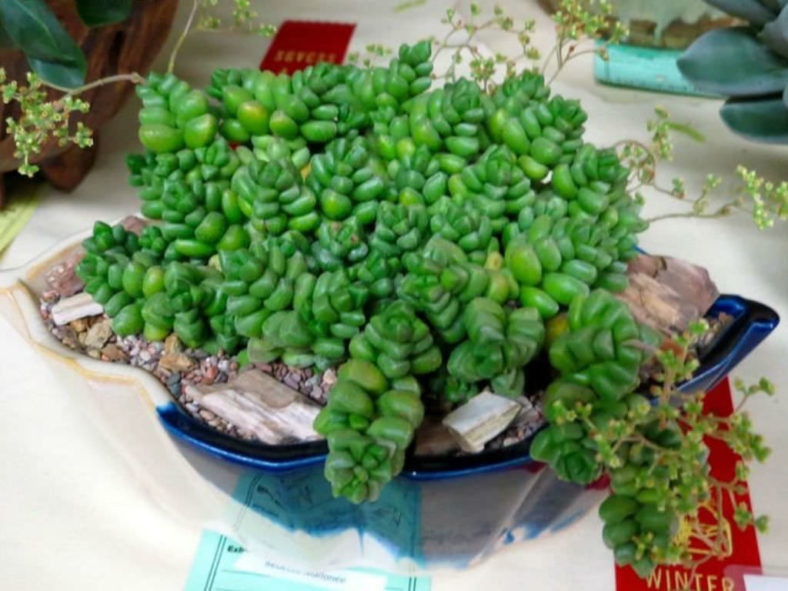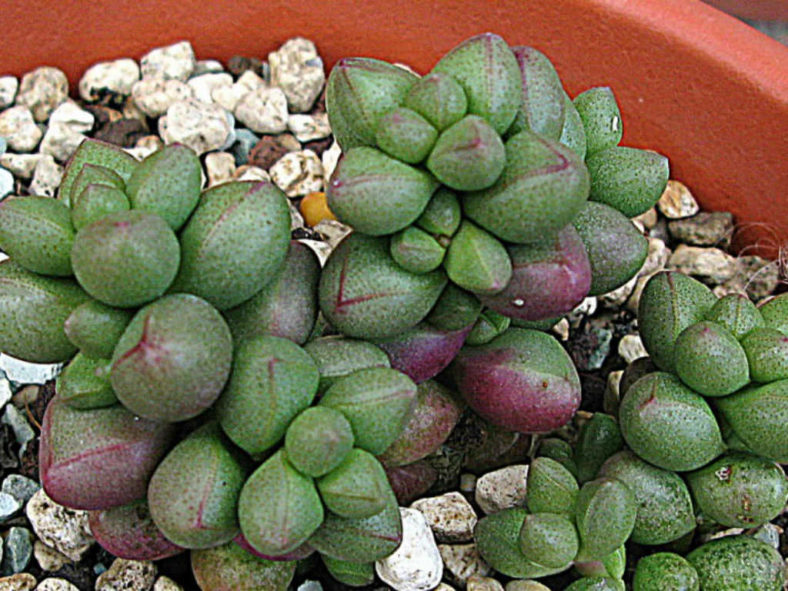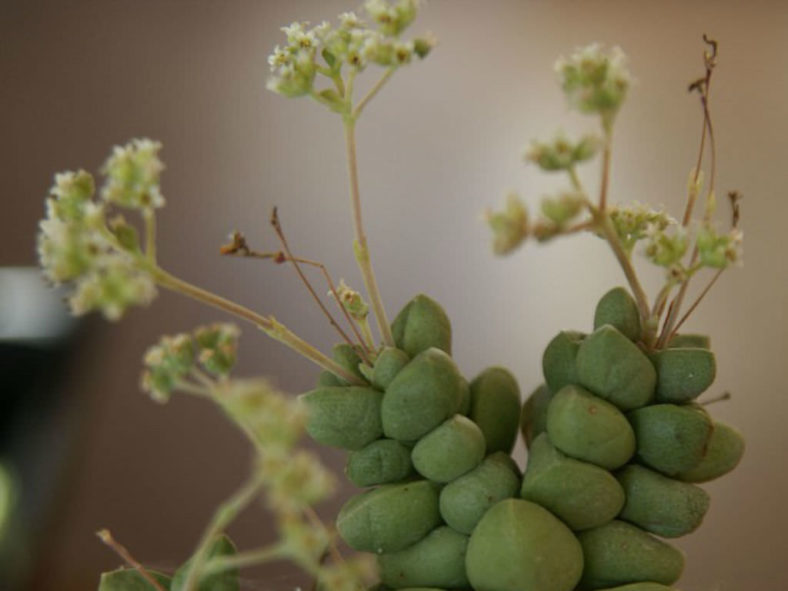Scientific Name
Crassula elegans Schönland & Baker f.
Common Name(s)
Elegant Crassula
Synonym(s)
Crassula alstonii, Crassula elegans subsp. elegans, Crassula mesembrianthoides
Scientific Classification
Family: Crassulaceae
Subfamily: Crassuloideae
Genus: Crassula
Origin
The native range of Crassula elegans extends from north of Vanrhynsdorp in the Western Cape province of South Africa to southwestern Namibia, mainly west of the mountains between Namaqualand and Bushmanland, growing on sandy or gravelly slopes or quartzite outcrops, often in shady spots but also exposed positions.
Description
Crassula elegans is a small, sprawling succulent with a fleshy or slightly woody base and short, much-branched stems with fleshy, densely packed leaves, usually in four ranks. It can grow up to 4 inches (10 cm) tall, including inflorescences. The leaves are smooth or covered with fine hairs or coarse, rounded papillae. They are green to brown or purplish-red, ovate to lanceolate, triangular in cross-section, and can measure up to 0.6 inches (1.5 cm) long and 0.4 inches (1 cm) wide.
The small flowers are white, cream-colored, or yellowish, often fading to brown, lightly scented, and appear in summer and fall in terminal clusters on stalks that can grow up to 2.4 inches (6 cm) long.

Hardiness
USDA hardiness zones 10a to 11b: from 30 °F (−1.1 °C) to 50 °F (+10 °C).
How to Grow and Care
Crassulas are easy to grow but susceptible to mealy bugs and fungal diseases. Overwatering is sure to be fatal, as with all succulents, so err on the side of being too dry rather than too wet. Never let your plant sit in water. If you water from beneath by allowing the plant to sit in a saucer, pour off any excess water after a few minutes.
These succulents are generally started by division, offsets, or leaf cuttings. Crassulas can be easily propagated from a single leaf. Sprout leaves by placing them into a potting mix for succulents, then covering the dish until they sprout.
Repot as needed, preferably during the warm season. To repot your Crassula, ensure the soil is dry before repotting, then gently remove the pot. Knock away the old soil from the roots, removing any rotted or dead roots. Treat any cuts with a fungicide. Place the plant in its new pot and backfill it with potting soil, spreading the roots as you repot. Leave the plant dry for a week or so, then begin to water lightly to reduce the risk of root rot.
Learn more at How to Grow and Care for Crassula.
Subspecies and Hybrids
Links
- Back to genus Crassula
- Succupedia: Browse succulents by Scientific Name, Common Name, Genus, Family, USDA Hardiness Zone, Origin, or cacti by Genus
Photo Gallery
Click on a photo to see a larger version.

